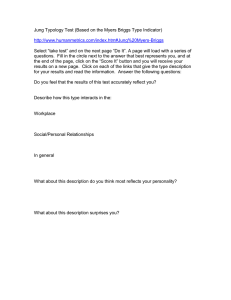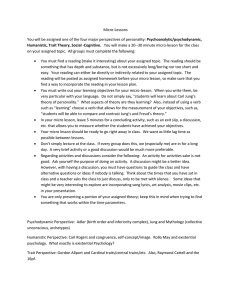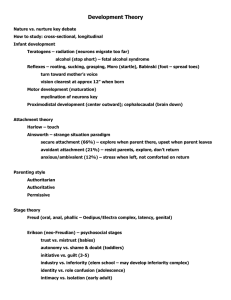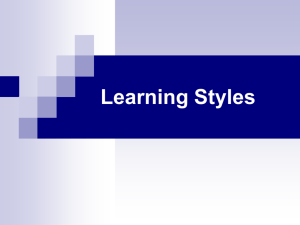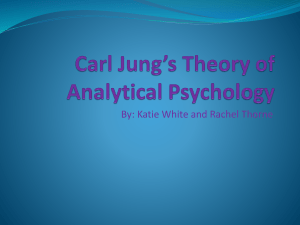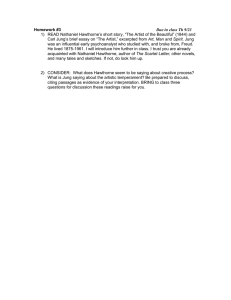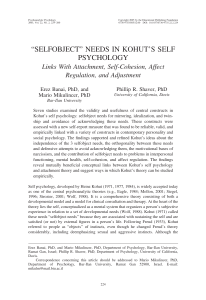Continued Evaluation of Freud
advertisement
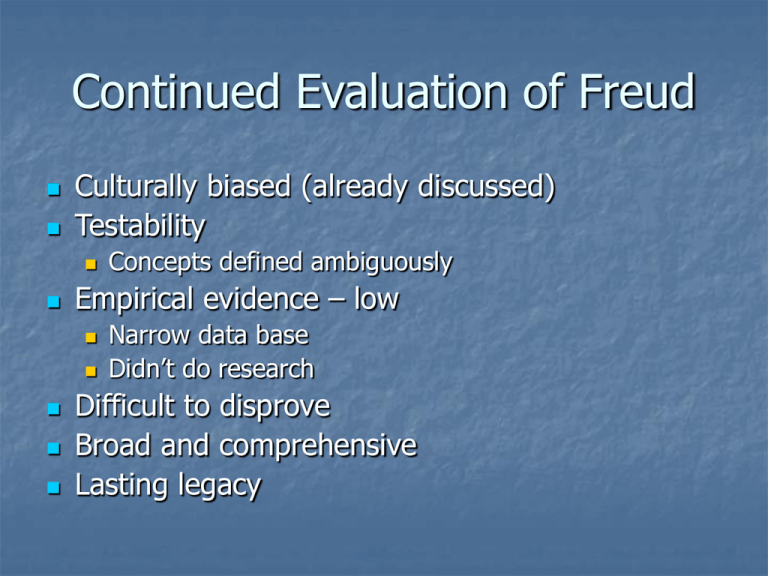
Continued Evaluation of Freud Culturally biased (already discussed) Testability Empirical evidence – low Concepts defined ambiguously Narrow data base Didn’t do research Difficult to disprove Broad and comprehensive Lasting legacy Carl Jung (1875 – 1961) Anyone who wants to know the human psyche will learn next to nothing from experimental psychology. He would be better advised to abandon exact science, put away his scholar's gown, bid farewell to his study, and wander with human heart through the world. There in the horrors of prisons, lunatic asylums and hospitals, in drab suburban pubs, in brothels and gambling-hells, in the salons of the elegant, the Stock Exchanges, socialist meetings, churches, revivalist gatherings and ecstatic sects, through love and hate, through the experience of passion in every form in his own body, he would reap richer stores of knowledge than text-books a foot thick could give him, and he will know how to doctor the sick with a real knowledge of the human soul. -- Carl Jung Carl Jung (1875 – 1961) Rich contribution Melding of psychology, religion, culture Parts of Mind: 1. Conscious ego 2. Personal unconscious 3. Collective unconscious Jung Archetypes Wise Old Man Hero Trickster Great Mother Jung’s Types: Introversion - oriented toward inner world Extraversion Preferred ways of dealing with the world 4 functions: 1. Sensing 2. Intuiting 3. Thinking 4. Feeling 1&2 are perceiving functions 3&4 are judging functions See Myers-Briggs Types Alfred Adler (1870 – 1937) Feelings of inferiority Striving for superiority Inferiority complex Mistaken lifestyles Karen Horney (1855 – 1952) Basic anxiety 10 neurotic needs 3 broad coping strategies Horney Coping or directional strategies: moving toward (compliance) moving away (withdrawal) moving against (aggression) Object relations theory object Heinz Kohut – self psychology selfobject mirroring Narcissitc personality Erik Erikson Psychosocial stages of development 1. Infancy: trust vs. mistrust 2. Early childhood: autonomy vs. shame 3. Preschool: initiative vs. guilt 4. School age: industry vs. inferiority 5. Adolescence: identity vs. confusion 6. Young adulthood: intimacy vs. isolation 7. Adulthood: generativity vs. stagnation 8. Old age: integrity vs. despair Attachment theories Attachment = emotional ties or bonds with someone Themes: 1. safe base 2. internal working models Secure attachment (70%) Insecure attachment (30%) avoidant ambivalent disorganized Ainsworth (1983); Isabella et al. (1989) Harzan & Shaver (1987) secure adults avoidant adults ambivalent adults Fraley & Shaver (1998)
